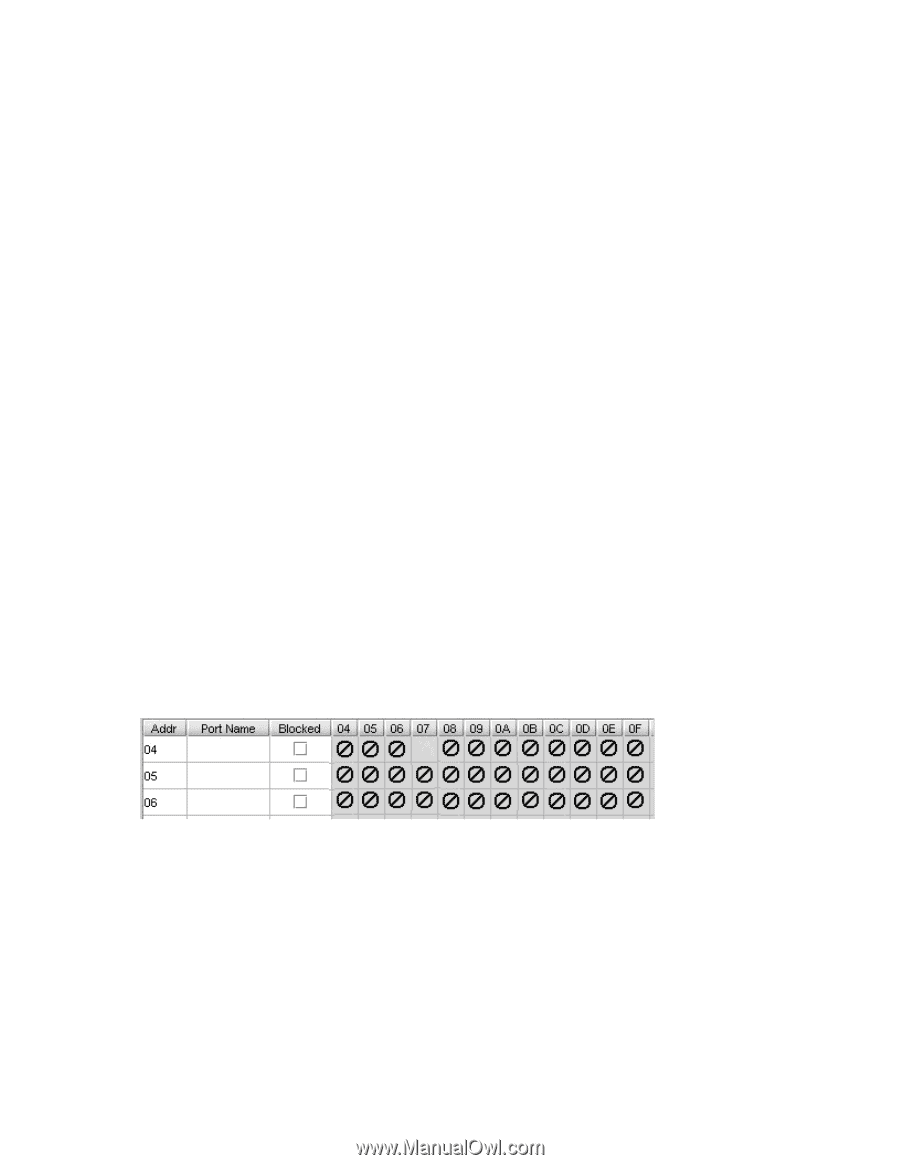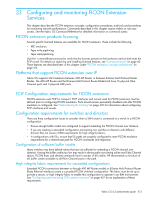HP StorageWorks 8/80 HP StorageWorks Fabric OS 6.2 administrator guide (5697-0 - Page 518
FICON emulation concepts and features
 |
View all HP StorageWorks 8/80 manuals
Add to My Manuals
Save this manual to your list of manuals |
Page 518 highlights
FICON emulation requirement for a determinate path FICON emulation processing creates FICON commands and responses on extended FICON Channel Path IDs (CHPIDs), and must know exactly what exchanges are occurring between a Channel and a control unit (CU) on a CHPID to function correctly. For FICON Emulation processing to function correctly, the responses to Host I/O (channel I/O) must be carried on the same ISL as the commands. There are three ways to ensure a determinate path for FICON commands and responses: • Define only one IP route and one FCIP tunnel between sites. • Use a traffic isolation zone (TI zone) to ensure that there is only one path across an ISL or FCIP Tunnel between an ingress and egress FICON port. • For HP StorageWorks M-series directors (6140 and i10K directors), implement the Allow/Prohibit feature. One Ethernet interface, one IP route and one FCIP tunnel between sites You can ensure a determinate path for FICON commands and responses by configuring only one Ethernet connection between the 400 MP Router SAN routers or B-Series Multi-Protocol Router Blades using only one IP route and one FCIP tunnel. Traffic isolation zoning The Traffic Isolation feature may be used to control the flow of interswitch traffic through the 400 MP Router SAN router or B-Series Multi-Protocol Router Blade VE_Port or E_Port connections. This feature can be used with Allow/Prohibit settings on M-series directors to create complete flow through paths between end points connected through M-series and Fabric OS products. Traffic isolation uses a special zone, called a traffic isolation (TI zone), to create dedicated paths for specific traffic. You can create a TI zone from either the command line, as described in "Installing and maintaining firmware" on page 213, or from Web Tools. Allow/Prohibit for M-series directors The Allow/Prohibit feature is available on the Mi10k and 6140 M-series directors. This feature enables you to control traffic flow between F_Ports and E_Ports. It is implemented from the Mi10K or M6140 Director Element Manager GUI through use of an Allow/Prohibit matrix. The matrix allows you to block (prohibit) specific F_Port to E_Port connections. You can create a determinate data path by blocking all F_Port to E_Port connections except the one you want to use for FICON traffic. Figure 86 shows a portion of the allow/prohibit matrix. The F_Port addresses are in the vertical column to the left, and the E_Port addresses are in a horizontal row at the top. In the portion shown, F_Port address 04 can connect to E_Port 07. All other connections are prohibited, as indicated by the universal prohibited symbol. Figure 86 Allow/Prohibit example See the Brocade Mi10K or M6140 Director Element Manager User Manual for specific information about implementing the allow/prohibit feature. FICON emulation concepts and features FICON emulation supports FICON traffic over IP WANs using FCIP as the underlying protocol. FICON emulation can be extended to support performance enhancements for specific applications through use of the following licensed features. • XRC emulation • Tape write pipelining • Tape read pipelining 514 Configuring and monitoring FICON Extension Services















